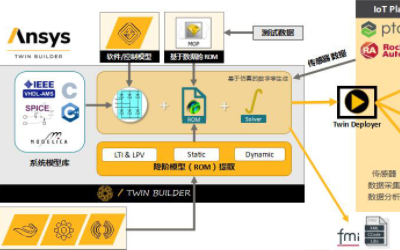Price war looms as smartphone market booms
China's big players are gearing up for a price war in the high-end smartphone sector, and the only big winner will be the consumer.
Xiaomi Corp, Huawei Technologies Co Ltd and ZTE Corp's Nubia have all rolled out new products in what has been dubbed the "Godzilla" handset business, as they battle to wrestle away more market share from South Korean-based giant Samsung.
"By introducing premium devices, the average price of high-end smartphones will be dragged down," Antonio Wang, an analyst with the United States-based market research company IDC in Beijing, said. "This will benefit consumers."
It will also create more problems for Samsung, which has already been badly mauled by the aggressive tactics of China's big three.
Earlier this month, the world's largest smartphone manufacturer reported that its second quarter operating profit would probably fall by 4 percent to 6.9 trillion won ($6 billion) because of poor sales of its new Galaxy S6, particularly in China.
As the brand loses its mass appeal here, consumers are switching to cutting-edge domestic products from Xiaomi, Huawei and Nubia.
"Chinese smartphone companies are now more willing to invest in innovation by putting state-of-the-art technology into their devices," Xiang Ligang, an independent analyst and founder of telecom website cctime.com, said.
"They know the 'low performance for low price' strategy does not work in today's market. Cheap devices will never make big profit margins," Xiang said.
The rise of China's smartphone companies from low-cost labels to upmarket brands has been meteoric.
Xiaomi shipped out 34.7 million smartphones in the first half of this year compared to 26 million during the same period in 2014 without revealing detailed financial figures.
Huawei announced shipments of 31 million units during the same period, a 40 percent increase compared to last year, without revealing detailed financial numbers. Nubia has yet to report its shipment figures in China.
For Samsung, the data are depressing. In the first quarter of this year, its shipments to the Chinese mainland were 9.6 million devices compared to 20 million during the same period in 2014, according to IDC. That left it in fourth spot behind Apple, Xiaomi, and Huawei in China's smartphone market, which is still the biggest in the world with estimated annual sales of about 400 million handsets.
"It (the fall in Samsung shipments) highlights the volatility of Chinese consumers' brand preferences," Wang, of IDC, said.
And there could be more pain on way for the South Korean company, analysts point out.
Xiaomi, Huawei and Nubia have launched models that target the 3,000-yuan ($480) price range, which used to be Samsung's territory.
The Mi Note Pro from Xiaomi retails at 2,999 yuan, with the company reporting 1 million pre-orders before it hit the stores in May.
The P8 from Huawei came out in April and costs 2,888 yuan, while the Z9 from Nubia is more expensive at $3,499 yuan.
"These new products illustrate that consumers are shifting to devices that provide better user experience," Wang Jingwen, an analyst at Canalys China in Shanghai, said. "They are going up upmarket (which is where Apple and Samsung are)."
At the top of that pyramid is Apple, the iconic iPhone brand. Despite the high cost and high rental fees charged by telecommunication providers to use their networks, the iPhone dwarfs its rivals.
At the start of the year, Apple consolidated its No 1 position in China by introducing a trade-in program, which saw a jaw-dropping 14.5 million smartphones delivered to the Chinese mainland in the first quarter. That was 1 million more units than Xiaomi in No 2 spot, according to IDC.
Since iPhone models retail at around 4,000 yuan, the gap in revenue with Xiaomi was stretched even further. To eventually challenge Apple, China's leading companies will have to come up with better products and better deals.
"Apple's trade-in initiative attracted more mid-end Chinese buyers and further increased the distance between local players," Wang, of IDC, said.
Apart from having Apple and Samsung in their sights, China's big three will have to keep a close eye on a new wave of domestic rivals. "Bringing down prices will be part of their strategy as other players enter the market," Wang said.
Weeks after LeTV Holdings Co Ltd, an online video company, unveiled a large screen Android device, known as Le Max, in April, Xiaomi cut the price of its flagship Note Pro device by 300 yuan.
Motorola Mobility, now a Lenovo subsidiary, also followed suit by announcing a 300 yuan discount on its latest high-end Motorla X series model in a move to target young buyers.
Joining them will be a new smartphone launched by Zhou Hongyi, an Internet tycoon who owns the nation's largest online security company Qihoo 360 Holdings Ltd.
Qihoo has linked up with Dongguan-based budget contract phone maker Coolpad Group to produce the Qiku range in the fall. Prices are believed to be around 3,000 yuan.
"The competition will be extremely fierce this year for Chinese vendors, especially for those who are moving up to high-end segment," Zhou said. "But there will be winners."
Huawei P8
Launched: April
Price: 2,888 yuan
The P8 is one of the most expensive models offered by the Chinese manufacturer. It is 6.4 millimeters thin and has a stylish all-aluminum body. Huawei claims the smartphone has the world's first four-color imaging sensor, which will dramatically increase the quality of photos. The front-facing camera is a huge 8MP for social media "selfies" and video chatting. Its rear camera is 13 MP in resolution, and good enough to take high-quality pictures. But the biggest selling point for the P8 is the Huawei-made processor, Kirin 930, which makes it fast. The only drawback is the price tag.
Le Max
Launched: July
Price: 2,999 yuan
This is LeTV's first premium smartphone. The online video platform rolled out Le Max with a 6.3-inch (160 millimeters) display with 1440x2560 pixel definition. Naturally, the high-resolution screen has been designed for the video market. Just like the Xiaomi Note Pro, Le Max is powered by a Qualcomm Snapdragon 810 processor, but has smaller storage capabilities. On the whole, it is still a pretty good product when you consider Le Max is the first mobile phone produced by LeTV. In future, the company will need to upgrade Le Max's operating system and software to make it more user friendly.
Xiaomi Note Pro
Launched: May
Price: 2,999 yuan
Xiaomi has called the latest Note Pro the king of Android phones. It is equipped with Qualcomm Inc's most advanced Snapdragon 810 processor, 4 gigabytes of memory and 64GB of storage. The handset is thin and light. Useful features include automatic identification, which can block unwanted calls. Xiaomi has also pre-loaded a number of popular apps such as WeChat and Weibo. One flaw is the weak vibration mode. Overall, it is a good choice for customers who are looking for an Android device, but are tired of the Samsung brand.
YotaPhone 2
Launched: May
Price: 4,888 yuan
The YotaPhone brand was an unlikely foreign success story in China. The Russian smartphone manufacturer Yota Devices launched its products here last year after Russian President Vladimir Putin sent a mobile to President Xi Jinping as a gift. The dual-screen design has played well with customers. Key points of the YotaPhone 2 include the fresh design, high-end specs and higher-resolution displays. These are welcome upgrades.
"By introducing premium devices, the average price of high-end smartphones will be dragged down," Antonio Wang, an analyst with the United States-based market research company IDC in Beijing, said. "This will benefit consumers."
It will also create more problems for Samsung, which has already been badly mauled by the aggressive tactics of China's big three.
Earlier this month, the world's largest smartphone manufacturer reported that its second quarter operating profit would probably fall by 4 percent to 6.9 trillion won ($6 billion) because of poor sales of its new Galaxy S6, particularly in China.
As the brand loses its mass appeal here, consumers are switching to cutting-edge domestic products from Xiaomi, Huawei and Nubia.
"Chinese smartphone companies are now more willing to invest in innovation by putting state-of-the-art technology into their devices," Xiang Ligang, an independent analyst and founder of telecom website cctime.com, said.
"They know the 'low performance for low price' strategy does not work in today's market. Cheap devices will never make big profit margins," Xiang said.
The rise of China's smartphone companies from low-cost labels to upmarket brands has been meteoric.
Xiaomi shipped out 34.7 million smartphones in the first half of this year compared to 26 million during the same period in 2014 without revealing detailed financial figures.
Huawei announced shipments of 31 million units during the same period, a 40 percent increase compared to last year, without revealing detailed financial numbers. Nubia has yet to report its shipment figures in China.
For Samsung, the data are depressing. In the first quarter of this year, its shipments to the Chinese mainland were 9.6 million devices compared to 20 million during the same period in 2014, according to IDC. That left it in fourth spot behind Apple, Xiaomi, and Huawei in China's smartphone market, which is still the biggest in the world with estimated annual sales of about 400 million handsets.
"It (the fall in Samsung shipments) highlights the volatility of Chinese consumers' brand preferences," Wang, of IDC, said.
And there could be more pain on way for the South Korean company, analysts point out.
Xiaomi, Huawei and Nubia have launched models that target the 3,000-yuan ($480) price range, which used to be Samsung's territory.
The Mi Note Pro from Xiaomi retails at 2,999 yuan, with the company reporting 1 million pre-orders before it hit the stores in May.
The P8 from Huawei came out in April and costs 2,888 yuan, while the Z9 from Nubia is more expensive at $3,499 yuan.
"These new products illustrate that consumers are shifting to devices that provide better user experience," Wang Jingwen, an analyst at Canalys China in Shanghai, said. "They are going up upmarket (which is where Apple and Samsung are)."
At the top of that pyramid is Apple, the iconic iPhone brand. Despite the high cost and high rental fees charged by telecommunication providers to use their networks, the iPhone dwarfs its rivals.
At the start of the year, Apple consolidated its No 1 position in China by introducing a trade-in program, which saw a jaw-dropping 14.5 million smartphones delivered to the Chinese mainland in the first quarter. That was 1 million more units than Xiaomi in No 2 spot, according to IDC.
Since iPhone models retail at around 4,000 yuan, the gap in revenue with Xiaomi was stretched even further. To eventually challenge Apple, China's leading companies will have to come up with better products and better deals.
"Apple's trade-in initiative attracted more mid-end Chinese buyers and further increased the distance between local players," Wang, of IDC, said.
Apart from having Apple and Samsung in their sights, China's big three will have to keep a close eye on a new wave of domestic rivals. "Bringing down prices will be part of their strategy as other players enter the market," Wang said.
Weeks after LeTV Holdings Co Ltd, an online video company, unveiled a large screen Android device, known as Le Max, in April, Xiaomi cut the price of its flagship Note Pro device by 300 yuan.
Motorola Mobility, now a Lenovo subsidiary, also followed suit by announcing a 300 yuan discount on its latest high-end Motorla X series model in a move to target young buyers.
Joining them will be a new smartphone launched by Zhou Hongyi, an Internet tycoon who owns the nation's largest online security company Qihoo 360 Holdings Ltd.
Qihoo has linked up with Dongguan-based budget contract phone maker Coolpad Group to produce the Qiku range in the fall. Prices are believed to be around 3,000 yuan.
"The competition will be extremely fierce this year for Chinese vendors, especially for those who are moving up to high-end segment," Zhou said. "But there will be winners."
Huawei P8
Launched: April
Price: 2,888 yuan
The P8 is one of the most expensive models offered by the Chinese manufacturer. It is 6.4 millimeters thin and has a stylish all-aluminum body. Huawei claims the smartphone has the world's first four-color imaging sensor, which will dramatically increase the quality of photos. The front-facing camera is a huge 8MP for social media "selfies" and video chatting. Its rear camera is 13 MP in resolution, and good enough to take high-quality pictures. But the biggest selling point for the P8 is the Huawei-made processor, Kirin 930, which makes it fast. The only drawback is the price tag.
Le Max
Launched: July
Price: 2,999 yuan
This is LeTV's first premium smartphone. The online video platform rolled out Le Max with a 6.3-inch (160 millimeters) display with 1440x2560 pixel definition. Naturally, the high-resolution screen has been designed for the video market. Just like the Xiaomi Note Pro, Le Max is powered by a Qualcomm Snapdragon 810 processor, but has smaller storage capabilities. On the whole, it is still a pretty good product when you consider Le Max is the first mobile phone produced by LeTV. In future, the company will need to upgrade Le Max's operating system and software to make it more user friendly.
Xiaomi Note Pro
Launched: May
Price: 2,999 yuan
Xiaomi has called the latest Note Pro the king of Android phones. It is equipped with Qualcomm Inc's most advanced Snapdragon 810 processor, 4 gigabytes of memory and 64GB of storage. The handset is thin and light. Useful features include automatic identification, which can block unwanted calls. Xiaomi has also pre-loaded a number of popular apps such as WeChat and Weibo. One flaw is the weak vibration mode. Overall, it is a good choice for customers who are looking for an Android device, but are tired of the Samsung brand.
YotaPhone 2
Launched: May
Price: 4,888 yuan
The YotaPhone brand was an unlikely foreign success story in China. The Russian smartphone manufacturer Yota Devices launched its products here last year after Russian President Vladimir Putin sent a mobile to President Xi Jinping as a gift. The dual-screen design has played well with customers. Key points of the YotaPhone 2 include the fresh design, high-end specs and higher-resolution displays. These are welcome upgrades.








